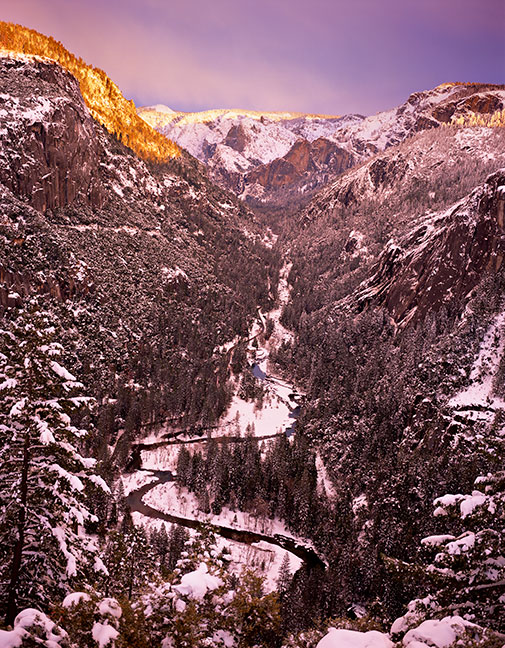Ultra Sharp: Mamiya 150mm f/4.5 + FotodioX Pro Fusion Smart Adapter for Fujifilm Medium Format
re: In Praise of Digital vs Film
Looking for a compact high performance telephoto for your Fujifilm medium format camera?
Sample images on the Fujifilm GFX100S sent to me from reader Brian K were persuasive on the sharpness front—razor sharp across the frame and into the corners. There is noticeable lateral chromatic aberration but it corrects-out nicely and is gone.
UPDATE: see Aperture Series: Mamiya 150mm f/4.5, Deck and House. Performance is quite good, but with boatloads of chromatic aberration, mostly but not fully correctable.
Years ago I owned the Mamiya 150mm f/4.5, a rangefinder lens for the Mamiya 7 II. It is designed to cover a 6X7 frame meaning a capture area of 56 X 70mm on 6X7 film—2.7X larger in area than the 44 X 33mm sensor of Fujifilm medium format. No problem with coverage and one wonders about a shift adapter. As a rangefinder lens, it is incredibly compact and only 18 ounces.
Available used at B&H Photo as well as on ebay.com. The good news is that for $400 to $600, you can pick one up. The bad news is that you need a $500 FotodioX Pro Fusion Smart Adapter for Mamiya 7 Rangefinder lens adapter, shown below.
There are also 43/4.5, 65/4, 80/4, 210/8 = Mamiya 7 II lenses. It would be an intriguing project to try them all out on the GFX100S, if someone out there has the set of them.
I have not tested this combo, but more than one source says it is a winner. My main concern is that a very large cone of light is being projected inside the camera/sensor area. It might be possible to mask offer the rear of the lens to cut that down, and maybe it won’t matter too much.

|

|

|

$500 FotodioX Pro Fusion Smart Adapter for Mamiya 7 Rangefinder Lens… OUT OF STOCK in Lens Accessories
|

|
James K writes:
I recently had a color negative from my Mamiya 7II camera and the 65mm scanned using the Heidelberg Tango drum machine. The expert technician remarked that she had never seen a image as sharp as the Fuji 400 negative.
The Mamiya 7II was always my go camera when I was shooting for New York ad agencies. When I needed a hand held powerhouse the 7II was there. I still own 3 cameras and a polaroid back and all the lenses except the 150. I tested the 150 and it was a killer but it was not practical because it’s a rangefinder and I had better viewing options for long lenses. Ebay has plenty of bargains. The 150 is a steal, a real killer and dirt cheap.
I like your photos of Tiger. Powerful looking cat.
DIGLLOYD: I always liked the Mamiya 7 II. I had three lenses for it. But I bought it too late in the film-to-digital cycle to really benefit from it for all that long.
Tigger is quite the athlete and hunter, one of a kind according to Delta Animal Rescue (I’ve documented a lot of Tigger’s behaviors in videos, though I’ve not shared them here). He is my own private 'bobcat', fascinating to observe and interact with. And yes, he is a very powerful cat for his size, with powerful rear-end muscles. He brings home nearly grown cottontail rabbits when he can find them (5 in 2.5 days once!), just like a Serengeti lion brings home a gazelle. Brains and heat get eaten first, then methodically on down, very precisely—I have the videos of that too.
Brian K writes:
Regarding the use of the 43mm, 50mm and 65mm Mamiya 7 lenses on the Fuji GF cameras sad to say they don’t do well. The edges and corners have serious blurring/smearing I assume due to some sort of ray angle issue. Those rear elements are just too close to the sensor. The 80mm, the 150mm and the 210mm work extremely well with the Fotodiox Fusion adapter.
DIGLLOYD: ray angle was my concern and it makes sense that these lenses would have issues.
Roy P writes:
I finally got the Fotodiox adapter working with the Mamiya 7 150/4.5 lens, for entirely different reasons than imagined: apparently, the blue ring that cocks the shutter was simply stuck in my adapter midway through its full turning range. A little extra force finally freed up whatever was holding it back, and now it moves smoothly through its full range, and it does work.
I have tried calibrating the adapter + lens with the camera a few times, and in spite of setting the focal length of the lens as 150mm in the camera, the EXIF always shows 50mm as the focal length. At least, the EXIF now shows the proper f-stop, although f/4.5 shows up as f/4. The camera works with the lens whether “Shoot without lens” ON or OFF, but having it ON consistently yields in better sharpness at lower shutter speeds, so I suspect the camera is applying image stabilization with this set to ON. I can’t think of any other reason.
I was swamped the past few days, so I couldn’t really test the lens much. I hope to that over the weekend, but from what little I’ve seen, the lens looks sharp where focused, if proper technique is used. There is extensive color fringing all over the image, both color bokeh and lateral CA. But between the Purple Fringing slider and the Chromatic Aberration correction based on image analysis, the color-fringing can be eliminated pretty well.
The lens does suffer from flare – forget about a bright source of light just outside the front objective: your image will get obliterated. Overall the lens is made well, but it comes with the absolutely worst lens hood I’ve ever seen from any manufacturer.
The other ergonomic is that the adapter + lens + hood does make it a little longish, but it is very light and in reasonably good lighting, easy to shoot hand-held for static or slow-moving subjects.
I will let you know if I see anything else worth sharing about the Mamiya 150/4.5 lens, but so far, it looks like a keeper. It becomes even more attractive if you can also add one or two additional Mamiya 7 lenses that would increase the utility of the Fotodiox adapter.
Considering manual focusing with the Mamiya 7 lens is not really much worse than autofocusing with the Fuji GF lenses, one could even make a case for building a Fuji GFX system comprising a Fuji body + a handful of these Mamiya 7 lenses! Let me know if there are some other Mamiya 7 Rangefinder lenses that might be worth picking up – maybe one of the shorter lenses, like the 80 f/4?
...a few weeks later..
Razor sharp, lots of micro contrast, very nice colors. At f/4.5, there’s a bit of vignetting, but at f/5.6, that’s gone. Of course, the lens is also very light and easy to carry around, and use hand-held, even using magnified Live View.
I think some of the Fotodiox Pro Fusion adapters are a bit flaky, so I just ordered another from B&H to get a second point of reference. Then I’ll keep the one that works more reliably and return the other back to B&H.
Apart from that and the crappy lens shade, the Mamiya 150 f/4.5 is just fabulous. IMHO, just this lens alone makes it worth buying a Fuji GFX 100S. This lens plus your new favorite, the 35-70 would be a very comprehensive package at a very modest price for the value you get – it is probably THE best package today in all of photography – nothing else comes close. If you want, you can add the Fuji 23mm f/4, 250mm f/4, and one or both the Fuji macro extension tubes, and there’s pretty much no situation you can’t handle, other than pro sports or extreme telephoto wildlife / birding. (For that, go to a Sony A1 + whatever long lens you want, from the 70-200 f/2.8 GM II to the 600 f/4.)
Thanks to your reader who first mentioned this Mamiya lens on your site. I highly recommend this lens to anyone who shoots a Fujifilm GFX camera.
I think all the goofy handling issues of the Fuji GFX 100S are forgiven because of this Mamiya lens!
DIGLLOYD: the longer lenses are excellent, wide ones like the 65/4 not so good. Stick to lenses above 100mm.

Mamiya 7 II, 150mm, f/11, Fujifilm Velvia 50




























